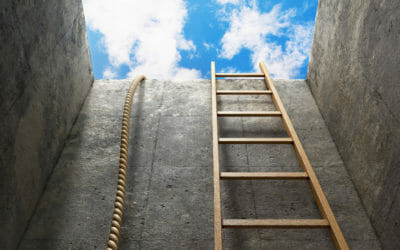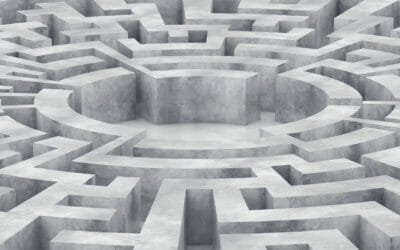A Scientific Approach to Meditation
Guest Author
Science and Spirituality Each Begin with Questions
All the great scientific advancements of the past century began with the same thing – a question. How does something work the way it does? Why is something constructed as it is? What’s at the root of how a bodily system functions?
Similar questions come to the forefront as we consider our place in life. As we ponder our existence, we are drawn to the great questions of life. Who are we? How did we come to be here? Where are we going when we leave this earth? Is there a Creator behind our enormously complex universe? What might be our relationship to the Creator?
With the medical advances of modern times, the scientific method is indispensable in providing insights and answers. The same approach used to clarify our questions regarding the outer world can be used to gain knowledge of the inner workings of creation.
Scientific Progress Depends upon the Scientific Method
Progress in science over the past hundred years is impressive. Medical science has cracked the genetic code, made significant inroads with organ transplantation and immunological challenges, improved the survival rates for many diseases, and in general enhanced the length and quality of our lives. Significant advances have been made in other scientific fields such as chemistry, physics, technology, and engineering.
The Science of Meditation
Today, meditation is more and more falling under the microscope of scientific investigation. Indeed, the phrase “science of meditation” is on the covers of two popular magazines: Time and Scientific American Mind. What does the “science of meditation” imply? Spiritual questions regarding meditation, similar to medical or other scientific questions, can be investigated with rigorous, systematic techniques using the time-honored “scientific method.”
Whether an individual is using the scientific method to investigate the objective outer world or the subjective inner realms, the approach is equally valid and valuable. Use of the scientific method as a guideline for spiritual exploration has been developed and promoted by the great spiritual scientists of ancient and of modern times. These spiritual explorers have long considered life’s great questions to be answerable through personal spiritual inquiry. However, unlike objective research questions, they require us to conduct experiments for ourselves, within ourselves.
Key Steps for Spiritual Exploration
We need several steps for a successful scientific approach to meditation. With these, we can embark on our own spiritual exploration.
Sant Rajinder Singh Ji Maharaj, my spiritual mentor, has said: “Since Newton’s time, no scientist has been able to develop any instrument for communicating with the Creator that is equal to the power of going within through prayer and meditation. It is time for a new paradigm. Old methodology and principles will not help us in our endeavor to discover higher realms. Science needs new methods if we are to advance further in our knowledge of ourselves, our universe, and the force that created all life. Science needs to move beyond dependence upon material instruments for proof of realms beyond the physical world.”
What are these methods that will help us gain knowledge of ourselves as we explore our spirituality? There are seven cornerstones to this effort.
Step 1 Seek guidance
Entering a new field of scientific study requires guidance from an experienced researcher. Students in graduate school or medical school are required to have a research mentor in order to undertake a research project. Similarly, spirituality demands such a relationship.
A budding research endeavor requires an experienced guide. For spiritual exploration, the guidance of an accomplished mentor who has mastered the spiritual journey is critical. Throughout their lifetime, people have mentors for help in learning to speak, to navigate adolescence, use a computer, drive a car, or prepare for a profession. Spirituality, the greatest and most challenging of human endeavors, likewise mandates the help of a mentor.
Step 2 Define questions
Scientific research begins with questions. Subsequently, the questions crystallize into a testable hypothesis. (Questions with no answers that are not testable fall out of the realm of scientific exploration.) Spiritual research is not approached willy-nilly but is propelled by our initial questions. For example, we may hypothesize that a person can have inner experiences in meditation. Or, we may want to learn if meditation will change our perspective on life or help us deal with daily stress. It is the spiritual advisor who helps us define our research project.
Step 3 Optimize learning with the guidance of a spiritual mentor
Sant Rajinder Singh Ji Maharaj’s guidance extends to many domains. He instructs students about the proper meditation technique and about the lifestyle that will support their meditation goals. Adherence is a necessary requirement for progress on the spiritual path.
Sant Rajinder Singh Ji offers the following advice: “Distracting thoughts . . . swirl about in our mind like a tornado during the time we are trying to meditate. If we can eliminate these negative traits, or learn to control them, our mind will be more balanced and calm, and our meditations will improve.”
Step 4 Be fully focused on the scientific research effort
In a modern-day medical center, the instrumentation to conduct clinical studies and scientific experiments is technologically impressive. These instruments, however, are limited to measuring and recording energies and activities associated with the physical realm.
To experience benefits from meditation, such as seeing the inner Light which exists beyond the physical domain, subtler instrumentation is required. Such instrumentation has in fact been provided to each human being by the Creator.
To collect our data, in order to accept or reject our spiritual hypothesis, we must use the delicate instruments of our spiritual laboratory. In a sophisticated medical research facility, a fledgling student does not walk into a laboratory and immediately start using the equipment. Similarly, a neophyte spiritual aspirant can receive guidance from the spiritual mentor who teaches how to properly use the body’s more subtle instrument, the inner eye.
No scientific progress is achieved without hard work, patience, and perseverance, which help to perfect the experiment. Similarly, these attributes are important for us to progress spiritually. When we conduct a scientific experiment, we need to be fully focused on the task at hand in order to perform the experiment with precision. In a similar vein, our mentor encourages us to approach the spiritual experiment with accuracy, steadfastness, passion, and absorption.
Step 5 Record your progress
Following an experiment in a medical institute, observations and data are collected on a computer or in a journal. Similarly, throughout the spiritual experiment, it is helpful for us to record the results of our meditation on a daily basis, also noting any obstacles. Sant Rajinder Singh Ji suggests we track the trend of our thoughts and behavior during the day to help us become more aware of any roadblocks to carrying out a successful spiritual experiment. Over time, blockages to our meditation progress will fall by the wayside.
Step 6 Be consistent
In the best medical research situations, the experiments are repeated daily until the techniques are perfected; research requires repetition. In the spiritual experiment, there also must be repetition—one meditates daily.
Step 7 Communicate your results
The final step of the scientific process is to analyze and communicate our results. In the medical world, this may be done with a presentation at a scientific conference, with a seminar at a university, or with a publication in a respected scientific journal. In the spiritual domain, the outcome of our experiments is personal. We experience firsthand how meditation has transformed our life.
A scientific model of meditation will provide us with a rigorous, reproducible approach to the practice of meditation. The steps involved in meditation will allow the fledging spiritual scientists to enjoy physical and psychological benefits and enrichments that extend beyond their physical body.
Following in the footsteps of the great spiritual explorers
Inspired by their love for humanity, scientists of spirituality have communicated their methods and the findings of their experiments to the rest of the world, so that the rest of the world can duplicate the same experiences. By adhering to the experimental protocol, an individual can experience for him or herself the results of the scientific inquiry and realize that spirituality is a scientific endeavor.
Much of what we experience is based in the physical world and, as such, requires the use of the brain and senses. Yet, those who meditate, following the experimental protocols provided by the great spiritual explorers, have the ability to transcend the physical realm and experience what lies beyond.
Guest Author Articles
Death and the Beyond
As a geriatric physician, Dr. Raider frequently deals with patients who are reaching the end of their lives. He shares insights learned that go beyond standard medical training.
Crisis Presents Opportunity
How can we confront the effect of the global crises that make life challenging and cause turmoil in our lives? Dr. Post explores a valuable opportunity that presents itself in the face of current crises.
Getting Hold of Your Thoughts
How can you control your thoughts instead of letting stress and worry control you? Dr. Young has answers that work.
Latest Articles by
Sant Rajinder Singh Ji Maharaj
Serving God’s Creation
Many only want to serve God directly. We do not realize that it is also God’s work to serve God’s creation. Each day, life presents us with opportunities to help others.
Spiritual Spring Cleaning
When we focus on examining our thoughts, we need to evaluate what aspects of ourselves we want to cleanse. We need to understand what is cluttering our minds and hearts and keeping us from opening up to God’s love.
A Healthy Attitude to Failure
As we sit for meditation and prayer we should not be discouraged. We should do our part to meditate accurately, and leave the rest to God. Then one day we will find that all our efforts have borne fruit.





















